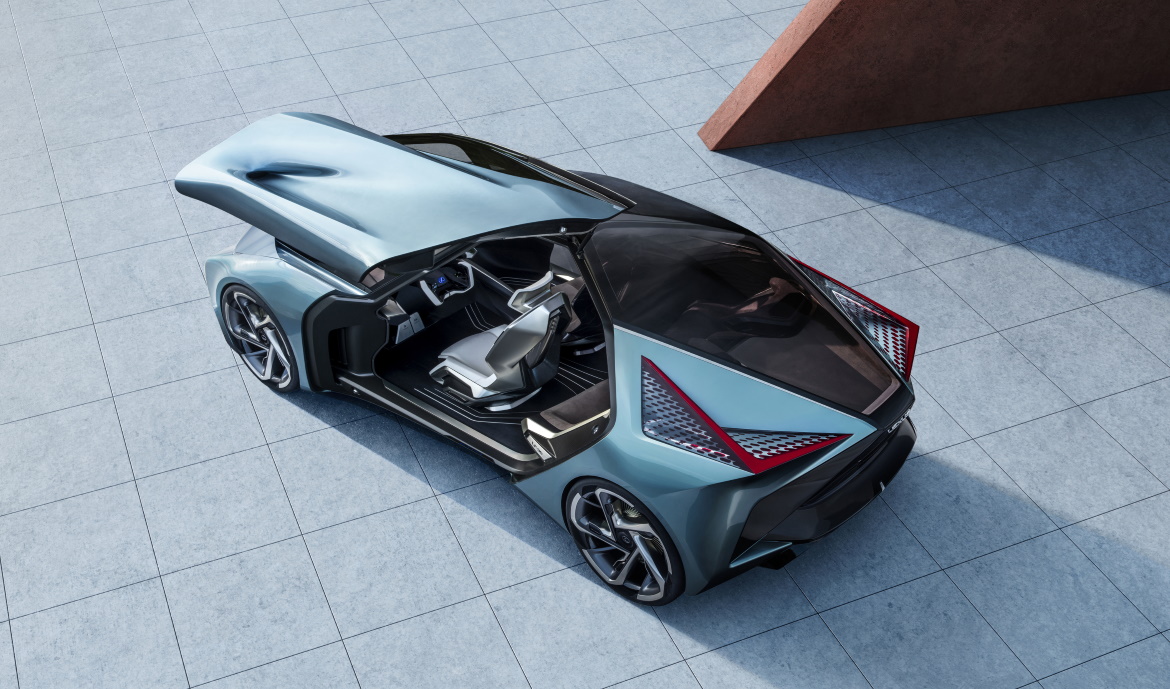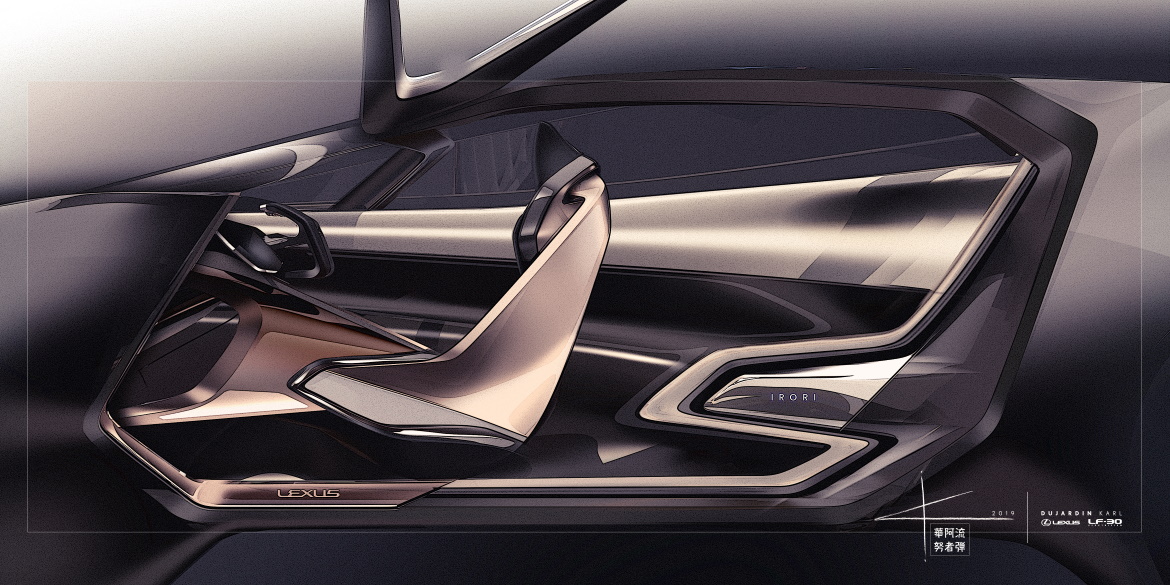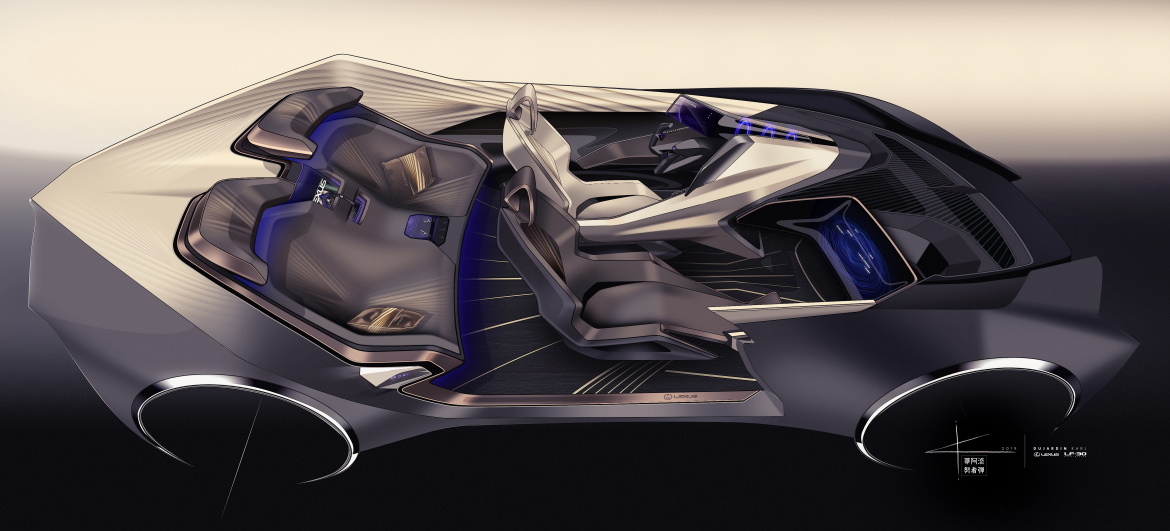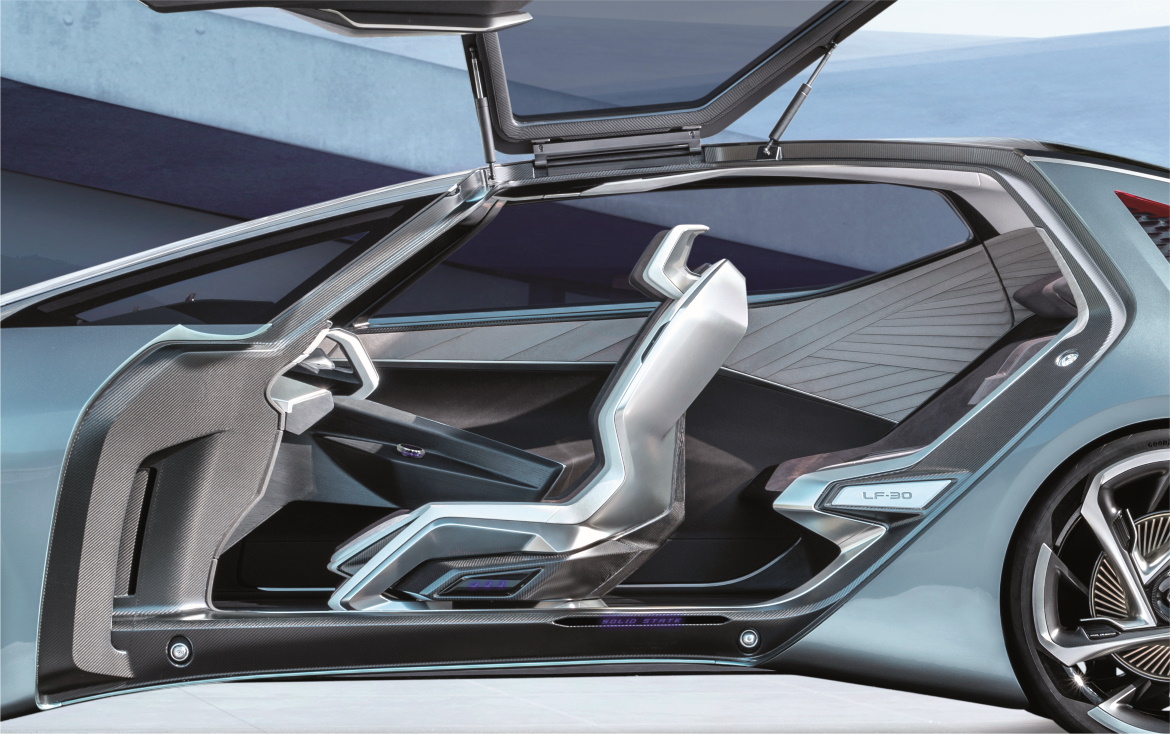Toyota’s luxury spin-off brand, the Lexus, was founded in 1989. Today, with thirty years of history behind it, it is attempting to look ahead one decade by proposing a concept that interprets how a hypothetical model of the brand will look in 2030. It’s called the LF-30 and it sprang from a sort of in-house competition among the manufacturer’s various design centres that saw the project proposed by the ED2 (European Design Development), the Toyota style centre near Nice, headed by the American Ian Cartabiano, win the day.
Auto&Design was able to preview it at the beginning of October, before it left for the Tokyo Motor Show. “This project”, explains Cartabiano, “is a concentrate of innovation. Starting with the form of the bodywork, which manages to combine two almost antithetical concepts such as that of a sports car and that of a family saloon. This is expressed through a body that starts from the muscular lines of the wedge-shaped front before taking on progressively softer, smoother contours in its transition towards the rear. Behind, the volume “opens” and “rises” to make room for a large, welcoming interior”.
Hideaki Iida, Lexus Assistant Chief Designer for Exteriors, talks about the wheels. “In the electric cars of the future”, he explains, “the distinction between bonnet and cabin will be increasingly blurred. The wheels will therefore play a key role in transmitting dynamism and sportiness. Especially for a brand like Lexus where these are essential values. This is why we have adopted such large wheels on the LF-30. We have also worked hard on the design of wheels and tyres”.
The Lexus LF-30 is 5.09 metres long and access to the interior is gained through a massive gullwing door. Made of carbon fibre to keep the weight down, it allows four occupants to reach their seats. Karl Dujardin, chief interior designer, explains: “At the front, the cabin is clearly divided into two separate areas. Through its forms and colours the driver’s area aims to maximise driving involvement”.
“In the driver’s seat, one is struck by the presence of two driver-oriented monitors that leave space in the middle for a series of transparent screens placed one behind the other to create a spectacular three-dimensional effect. Quite different is the layout for the passenger, who finds himself in a roomier, more comfortable area, inspired by the first-class seats of an aeroplane”.
There’s plenty of space in the back too, characterised by materials with warm, natural tones like wood and Alcantara that alternate with various types of screens set between the seats. The roof is particularly striking with Skygate, a screen that reproduces holograms and images of various types.
(Full article in A&D no. 240)
















